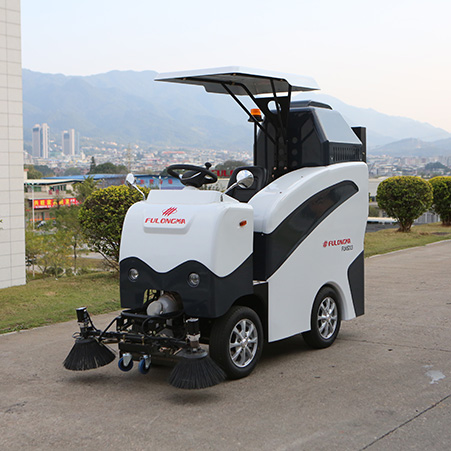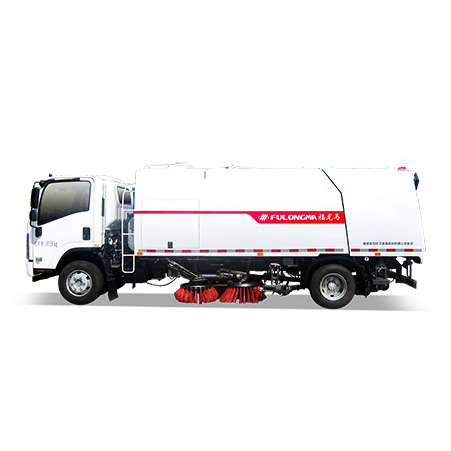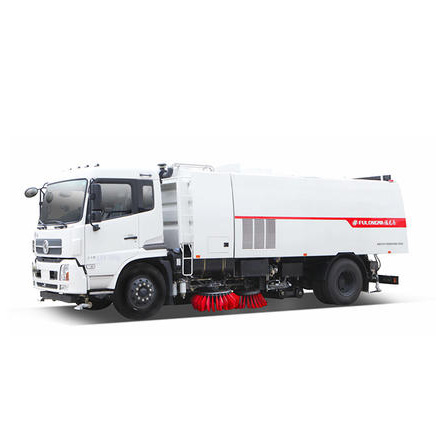Imagine a city street under a deluge of rain. The rain cascades down, pooling in gutters and turning debris into a soggy mess. Enter the road sweeper truck, a colossal, buzzing machine, braving the torrents to restore order to the urban chaos. As it works its magic, you might wonder: how does this industrious vehicle tackle such a wet, slippery challenge? What about in the blistering heat, or during a snowstorm?
The effectiveness of road sweeper trucks isn’t just about horsepower and brush technology—it’s about their ability to adapt to a range of weather conditions. In this post, we’ll dive into how these machines conquer the elements, ensuring our streets stay clean and safe year-round.
The Challenge of Weather Conditions

Road sweeper trucks are the unsung heroes of urban cleanliness. Their role becomes especially critical when the weather throws its worst at our streets. Different weather conditions present unique challenges that these trucks must navigate with finesse. Let’s break down how these formidable machines tackle various weather conditions.
Rain
When rain transforms streets into rivers, road sweeper trucks face a significant hurdle. Waterlogged debris can be heavier and more challenging to manage. The rain also makes roads slippery, complicating the sweeper’s ability to maneuver effectively.
Adaptations for Rain
- Enhanced Drainage Systems: Many modern road sweeper trucks come equipped with advanced drainage systems to handle excess water and prevent clogs.
- Specialized Brushes: Rubber or synthetic brushes that can maintain performance even when saturated with water help in dealing with slippery conditions.
- Increased Suction Power: Enhanced suction systems help manage the increased volume of debris and water, ensuring efficient cleaning.
Snow and Ice
Snow and ice turn street cleaning into a winter wonderland of challenges. Ice can accumulate on the road, making it treacherous for both the sweeper and pedestrians. Snow piles can obstruct the sweeper’s path and reduce visibility.
Adaptations for Snow and Ice
- Heated Brushes: Some road sweepers are fitted with heated brushes to prevent snow and ice from sticking and to keep the cleaning process efficient.
- Snow Plow Attachments: To clear heavy snow, many road sweeper trucks can be equipped with snow plows or blades to handle the initial snow removal before the sweeping begins.
- Traction Enhancements: Snow chains or special tires improve grip and prevent slipping on icy roads.
Heat and Sun
Extreme heat and glaring sunlight can test the limits of road sweeper trucks. High temperatures can cause machinery components to overheat, and dust storms can turn streets into swirling vortexes of debris.
Adaptations for Heat and Sun
- Cooling Systems: Road sweeper trucks in hot climates often have advanced cooling systems to prevent overheating and ensure smooth operation.
- Dust Suppression: Water tanks and misting systems help to control dust and prevent it from being blown around, maintaining visibility and cleaning efficiency.
- Reflective Coatings: Some trucks feature reflective or heat-resistant coatings to protect against prolonged exposure to the sun’s rays.
Wind
Strong winds can turn a road sweeper truck’s task into a battle against the elements. Wind can scatter debris and dust, complicating the cleaning process and reducing the truck’s effectiveness.
Adaptations for Wind
- Aerodynamic Designs: Modern road sweeper trucks often incorporate aerodynamic features to reduce wind resistance and improve stability.
- Reinforced Vacuums: Enhanced vacuum systems are designed to handle debris that gets tossed around by the wind.
- Wind Shields: Larger or reinforced windshields help protect the operator and maintain visibility in gusty conditions.
Technological Enhancements
Technology has revolutionized road sweeper trucks, making them more adaptable to varying weather conditions.
- Sensors and Automation: Advanced sensors can detect weather conditions and automatically adjust the truck’s settings to optimize performance. Automated systems help in managing different weather-related challenges without constant manual intervention.
- Weather-Responsive Features: Some trucks feature real-time weather monitoring systems that adjust cleaning parameters based on current conditions, ensuring optimal efficiency.
Maintenance and Operation
Maintaining and operating road sweeper trucks effectively requires attention to detail, especially when dealing with diverse weather conditions:
- Regular Maintenance: Regular checks and maintenance are crucial for keeping the sweeper in top condition. This includes inspecting and cleaning brushes, checking hydraulic systems, and ensuring that all weather-specific adaptations are functioning correctly.
- Operator Training: Proper training helps operators understand how to handle different weather conditions effectively. Knowledge of how to adjust settings and maintain equipment can make a significant difference in performance.
Conclusion
Road sweeper trucks are indispensable in keeping our streets clean, regardless of the weather. From battling rain and snow to enduring heat and wind, these machines are equipped with a range of features and technologies designed to tackle diverse conditions. By adapting to weather challenges and incorporating advanced technological enhancements, road sweeper trucks ensure that our cities remain clean and safe throughout the year.








